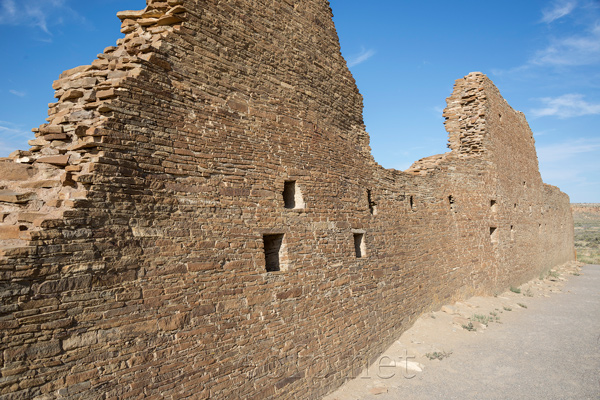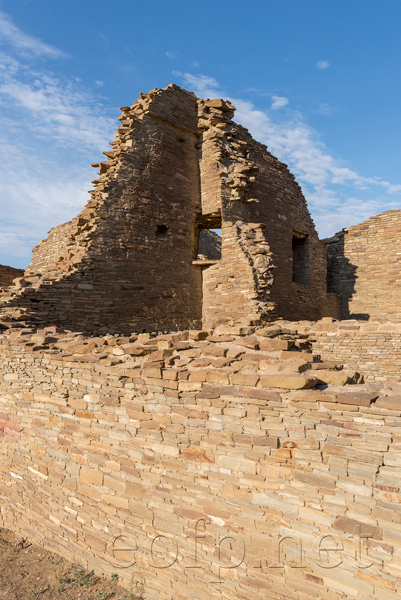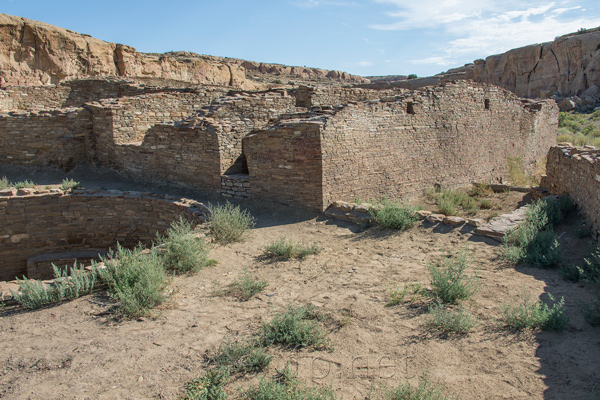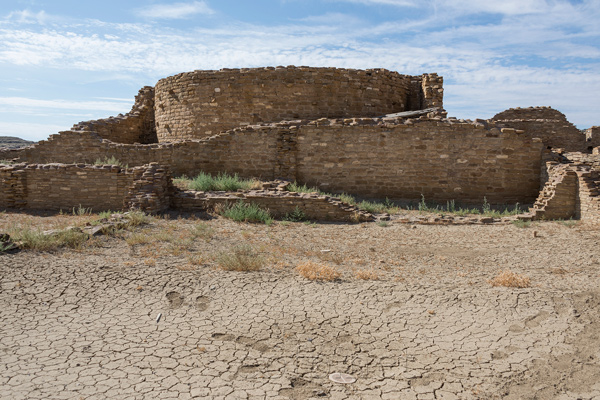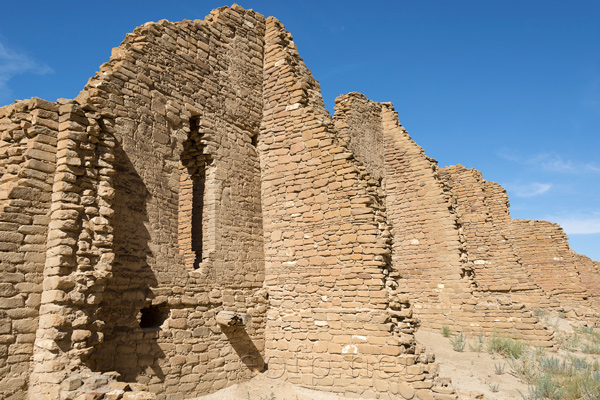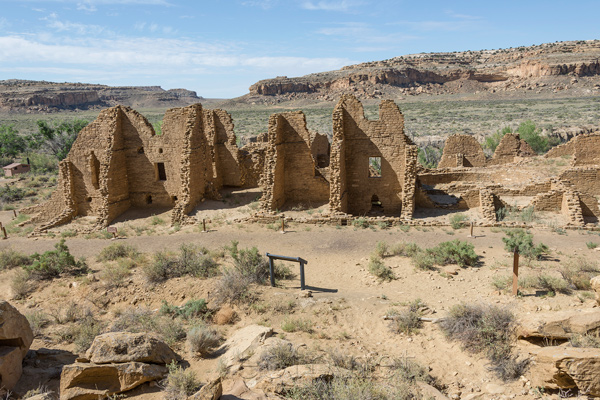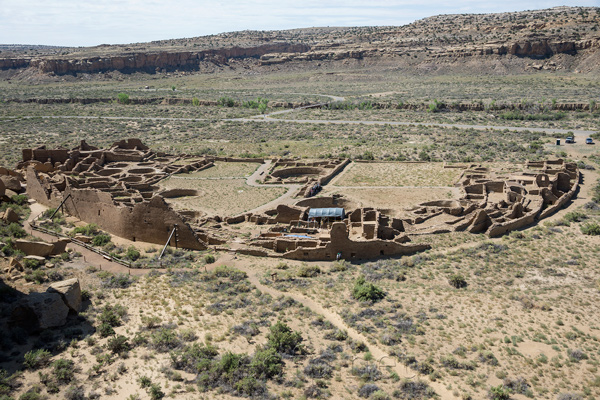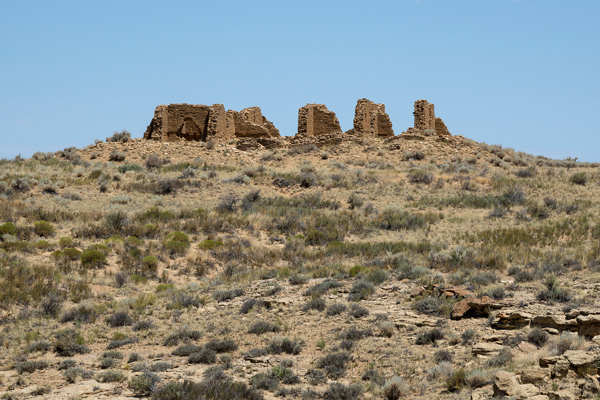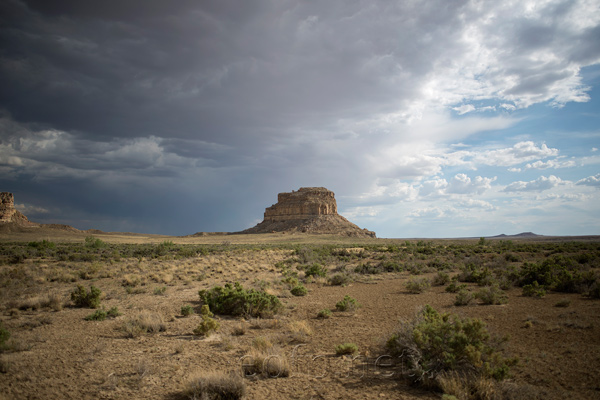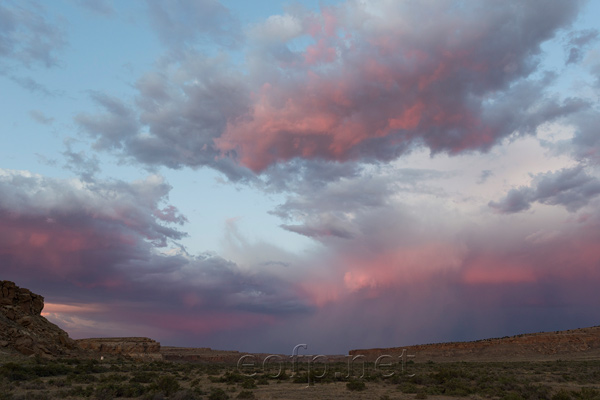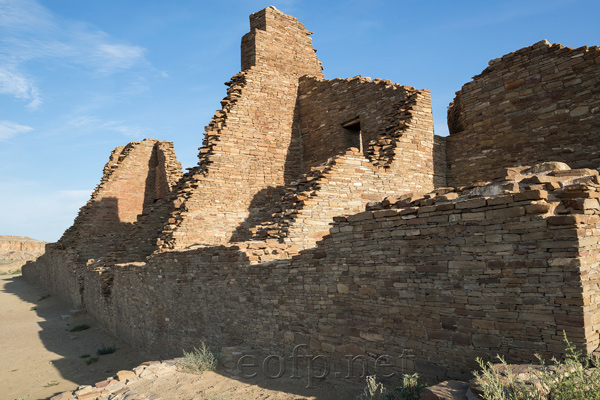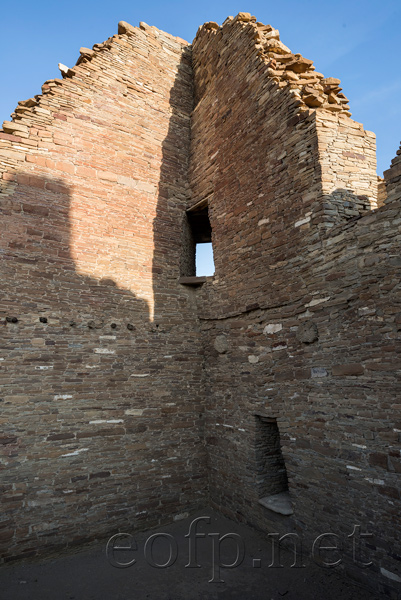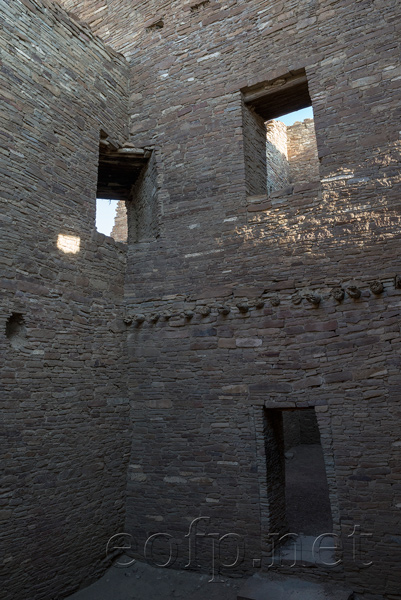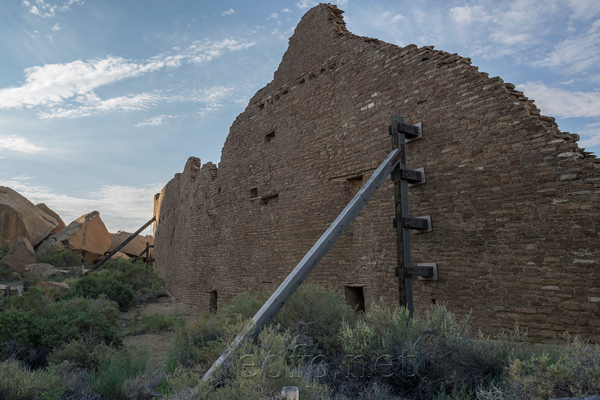12/14/2013
Chaco Culture National Historical Park, New Mexico
Chaco Culture National Historical Park
Chaco Canyon has the largest concentration of pre-Columbian ruins in the United States. There are ruins of dozens of distinct pueblos or "great houses" in close proximity on the canyon floor and rim. Most of these stone buildings were constructed from 800AD to 1200. The canyon was abandoned in the 1300s due to extreme drought and possibly other factors, and has been only marginally populated since. During the height of Chaco culture around 1100, the canyon was the center of a large civilization with roads radiating away from it towards pueblos and villages throughout the Southwest. Chaco Canyon is a UNESCO world heritage site and is managed by the National Park Service as Chaco Culture National Historic Park.
Chaco Culture National Historical Park
The buildings of Chaco are fascinating. It's amazing to me that these massive buildings were built incrementally over hundreds of years and yet ended up having a uniform shape and design. Pueblo Bonito housed as many as 1,200 people in a single building. The pathways between sections of the building cut directly through living spaces. There are no hallways in the occupied rim of the structure. Some rooms had doors on all four walls as well as ladders to access floors above and below. In some ways the great houses are similar to pueblos like Taos that are still inhabited. The buildings of Chaco suggest a kind of communal living that seems utterly foreign to me. The buildings were skillfully constructed with very tightly fitted stones and mortar. Wooden posts were set in the walls to support upper floors and roofs. When visiting the park it's possible to walk inside and through these thousand year old rooms.
Chaco Culture National Historical Park
Chaco Canyon has a single campground with 30 or so sites. Apparently it does fill on occasion but never while I've been there. It will be possible to reserve a site online beginning in 2014 but was previously impossible. Getting in and out of Chaco is a pain. The road from the North into Chaco from 550 is fine until the pavement stops about 14 miles from the park. The last 5 miles or so before reaching the park had some of the worst wash-boarding I've ever seen when I was there in 2013. I was frequently forced to go as slow as 3-5 miles per hour on this last stretch. The road heading South out of the park has sand traps that people were getting stuck in when I visited. The park staff advised against using it. Given the poor road conditions it takes 2 hours or longer to get to Bloomfield, the nearest town of any size and the nearest motel. It would be very sad to drive all the way into the park and discover that the campground was full. There is a gas station/convenience store near the turn off from 550 to the park. The park has water but there are no other supplies available and it can take an hour or longer of unpleasant driving to cover the 20 miles from the park to the gas station on 550. The roads inside the park are well paved and maintained. It seemed that the problem with road maintenance was that the damage being done to the access road was being done by trucks entering and leaving the park and visitor traffic. Maintaining the road is the responsibility of the Navajo Nation. There are only a few Navajo ranches on the road so it's not surprising that it's a low priority for them. I don't understand why the park service or the state of New Mexico doesn't offer to maintain the road leading to the park. It's one of the most important historic sites in the country and should be a major tourist attraction. I don't know. Maybe the Navajo are trying to keep it from being over-run with visitors. As it is the poor roads and the remote location keep it fairly empty.
Chaco Culture National Historical Park
It's hot and sunny in the canyon in the summer. I thought that hiking in the canyon and rim was much more pleasant when I visited in the early spring than during a visit in July. The entire park outside of the campground closes at sun-down. There are a few options for night photography along the road leaving the park but it's not possible to photograph the ruins at night. It's an amazing place to visit. The scale and number of ruins in Chaco are orders of magnitude larger than any of the other Puebloan or pre-Puebloan sites I've been to. The canyon itself isn't particularly dramatic but it's strangely, uniquely peaceful. I would definitely recommend spending a few nights there, if you visit.
Chaco Culture National Historical Park
Chaco Culture National Historical Park
Chaco Culture National Historical Park
Chaco Culture National Historical Park
Chaco Culture National Historical Park
Chaco Culture National Historical Park
Chaco Culture National Historical Park
Chaco Culture National Historical Park
Chaco Culture National Historical Park
Chaco Culture National Historical Park
Chaco Culture National Historical Park
Chaco Culture National Historical Park
Chaco Culture National Historical Park
Second Page of Chaco Photos
All content on these pages Copyright Mark Hedlund 2012-2019. All rights reserved. Use in school projects and with links on social media is always okay. Please send me an email to request permission for any other use: hedlunch@yahoo.com Non-exclusive commercial publication rights for most photos is $25 per image.

